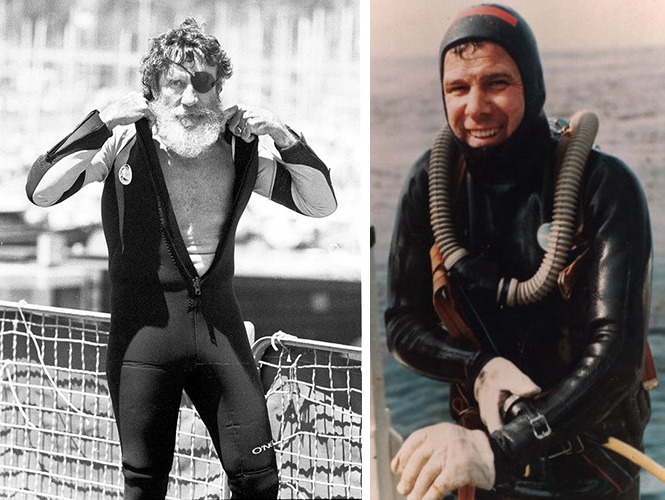The History of Wetsuits: How the Wetsuit Came to Be
Lauren Collison July 13th, 2018 Posted In: Articles
The History of Wetsuits
Today, a neoprene wetsuit is as essential a piece of diving equipment as an air tank. However, that wasn’t always the case. As recently as the beginning of the 20th century, divers risked hypothermia and contact with sharp objects before the invention of the wetsuit. With that being said, let’s dive into the history of wetsuits.
A Little Wetsuit History
A wetsuit is designed to help keep the body warm and protected and to prevent hypothermia. As the name implies, this neoprene suit contains small amounts of water in between its layers and helps to maintain the body’s core temperature as the outside water temperature drops.
The Beginning of the Wetsuit
Today’s wetsuit can trace its origins back to the commercial fishing and salvage industries of the 1910s. The Mark V suit was invented as a means for divers to reach greater depths while protecting them from injuries from sharp objects underwater. This early suit resembled a modern space suit compared to today’s wetsuits. It was used extensively by the U.S. Navy Frogmen during World War II.
The Modern Day Wetsuit

Left: Jack O’Neill, Right: Bob Meistrell. Both images courtesy of The NY Times.
The modern wetsuit dates back to 1951 – 1952. It was invented by Hugh Bradner, a physicist associated with the University of California, Berkeley looking to improve on the equipment used by the U.S. Navy. Early wetsuits sandwiched the relatively-thin neoprene between layers of spandex or nylon. The earliest versions of the wetsuit worked by trapping a small amount of water between the body and the suit. This water was heated by the body’s own temperature and acted as insulation. These modern wetsuits also had improved stitching and seams that kept the suit watertight and prevented the outside water from entering the suit and cooling the diver.
Bradner’s first patent application was rejected because it was deemed to be too close to a flight suit. His introduction of the wetsuit to the U.S. Navy was also spurned. The Navy was concerned that the gas inherent in neoprene would make divers more visible on sonar.
The program was taken in 1952 by Jack O’Neill, who started producing early neoprene wetsuits in his Santa Cruz garage. His company, called O’Neill began selling these suits in 1959 with the motto, “It’s always summer on the inside.” Around the same time, Bob Meistrell started producing a similarly-designed wetsuit under the company name Body Glove.
The first neoprene suits were not easy to put on and could be easily torn by pulling and stretching. This led to the practice of divers sprinkling talc on their bodies before donning their wetsuit. After a few years, wetsuits began being lined with nylon so they could be put on more easily.
Today’s Wetsuits
The modern era of wetsuits began in 1989 with the advent of the non-zip wetsuit by Body Glove. Their design used materials, such as spandex, to make the suit easier to don and to wear.
Today, there are a variety of different types and styles of wetsuits. Among these are the shorty, designed for diving in warmer water and the steamer, a full wetsuit used for protection for the entire body. These wetsuits are worn by divers, Navy and other military divers, commercial fishermen, surfers, windsurfers and others sports enthusiasts who need that extra protection against cold water.
And there you have it – the history of wetsuits and how they came to be!

